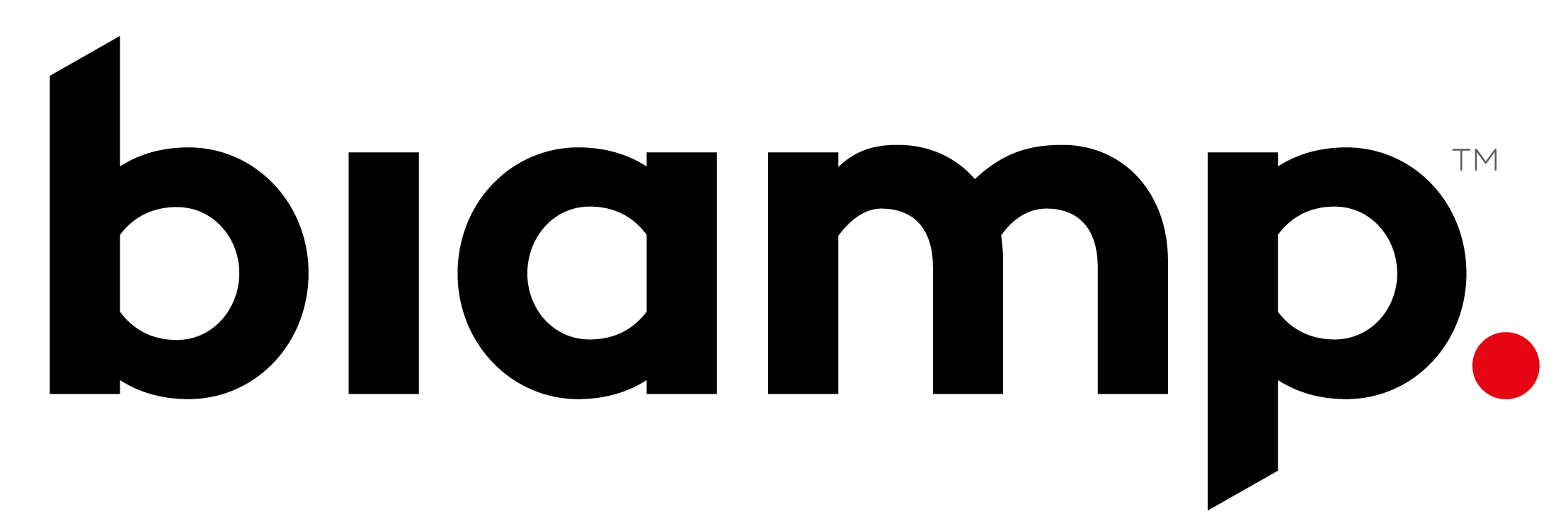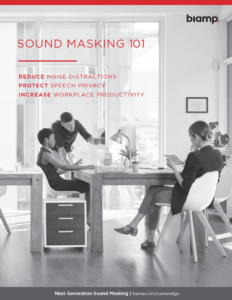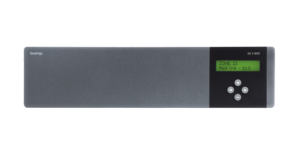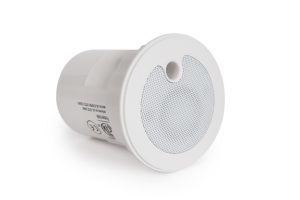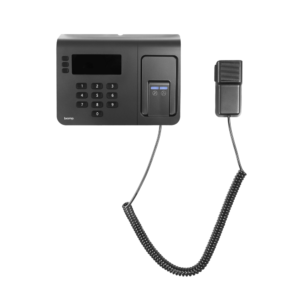Picture a typical office environment that you’ve worked on as a systems integrator. What does it look like? Chances are, it’s an open office with private offices along the walls and a bunch of cubicles in the middle. Are many of the walls to offices and conference rooms made of glass? Is there a drop ceiling?
More Modern?
Or perhaps it’s a more modern office space, where the cube farm has been replaced by dogbone tables, each populated with numerous t-shirt-clad software developers crowded around their laptops. Maybe it’s in an old mill building or warehouse with a high, exposed ceiling.
What do these two office environments have in common? Very likely, they both have dissatisfied employees. The reason? Lack of speech privacy. Those low cubicle walls you’re seeing aren’t doing anything to block the sound of the guy four cubes over talking loudly to his client. Those glass walls and windows? The conversation from the two women in accounting about their weekend is echoing for the entire office to hear.

Most facility managers, HR managers and even IT managers recognize that noise distractions are a problem. They just aren’t aware there’s a solution to that problem. And even if they are aware, they probably don’t know that their systems integrator is the person who can solve it. In both cases, however, one of the most effective and efficient solutions to your clients’ noise problem is called sound masking, and it dovetails with other AV or cabling work you’re already implementing for your clients.
The Noise Problem
Recent studies have shown that lack of speech privacy is what’s really driving your client’s employees crazy. What’s speech privacy? Simply put, it’s the inability of an unintentional listener to understand another person’s conversation. So, people with a lack of speech privacy are overhearing lots of conversations they shouldn’t be, which is, understandably, quite annoying to employees.
The Center for the Built Environment in San Francisco surveyed more than 25,000 workers in more than 2000 buildings to determine what the key environmental issues were for workers. Of all the factors workers encounter in their office environment (general maintenance, layout, furnishings, thermal comfort, air quality and lighting), speech privacy was the factor they were the most dissatisfied with. In addition, researchers at the University of Sydney recently discovered that lack of speech privacy is the number one complaint among cubicle workers and open-plan employees, with 60% and 50%, respectively, describing it as a major issue. Employees are interrupted once every 11 minutes according to research from UC Irvine, and it takes them up to 23 minutes to get back into the flow of what they were doing before they were interrupted.
Costing Clients Money
Lack of speech privacy is also costing your clients money. In a study presented to the International Congress of Noise as a Public Health Problem, researchers found that, on average, employees waste 21½ minutes per day due to conversational distractions, making lack of speech privacy the number one cause of reduced productivity. That’s roughly 4% of an average employee’s workday (based on an eight-hour day). Some quick math shows that a company with 100 employees and an average employee salary cost of $100,000 is losing $400,000 a year in productivity. Not exactly chump change.
A lack of speech privacy can lead to costly distractions, but also makes it possible for employees to overhear conversations they probably should not hear. For example, as walls to private offices become cheaper and thinner, closing the door to an office no longer guarantees speech privacy (in fact, it’s probably worse because closing that door provides the illusion of privacy.) Many private conversations could be HR nightmares if overheard by the wrong people (picture an HR manager talking to an employee about a sexual harassment complaint). And, in some cases, not providing sufficient speech privacy can even be illegal. Medical offices need to provide speech privacy for conversations between doctors and patients in order to comply with HIPAA regulations, for example.
What Employers Can Do
Although everyone knows that lack of speech privacy is a problem, few know that there’s a solution beyond giving every employee a private office or building higher cube walls. So what’s the solution?
You can read the rest of the article here.
